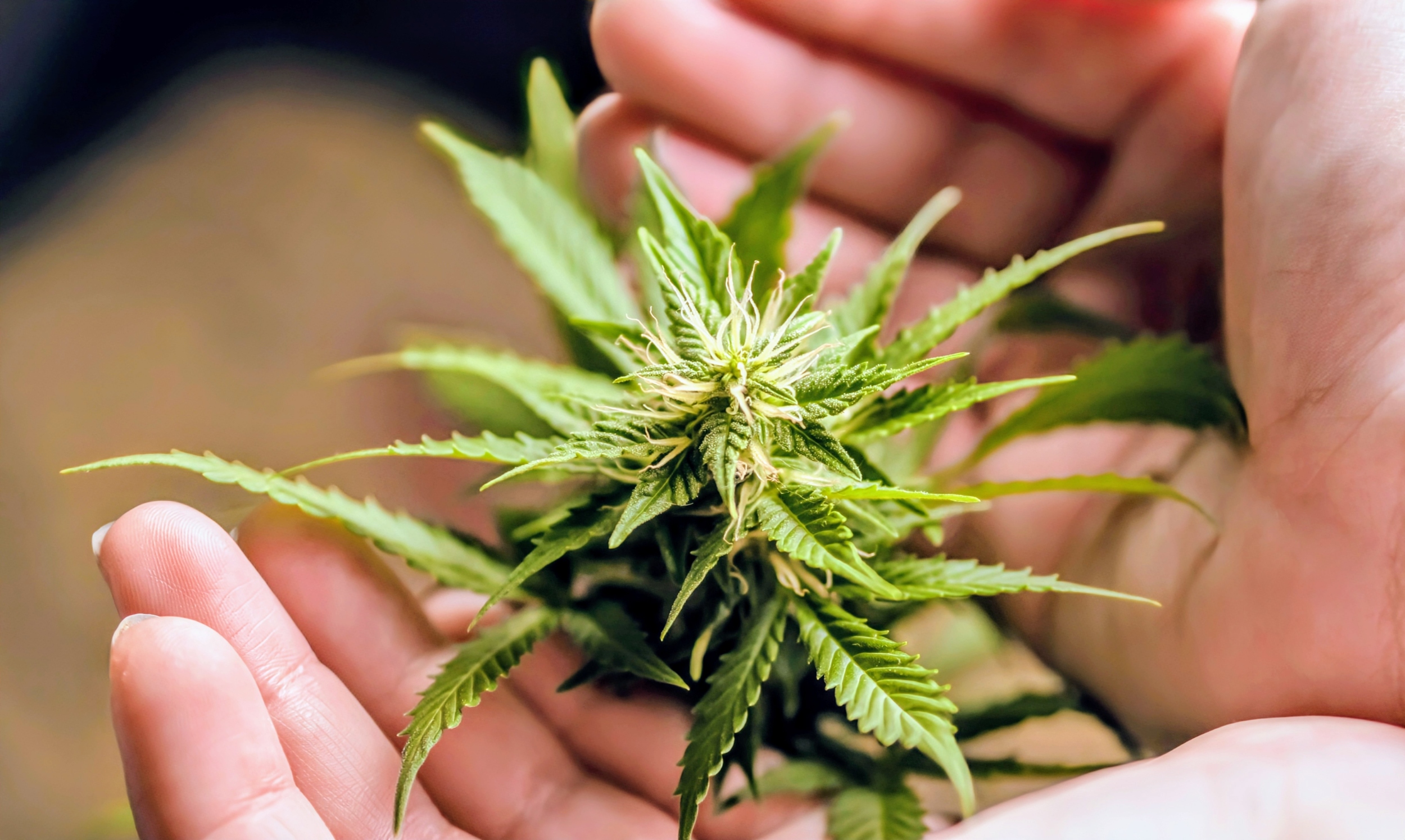[[{“value”:”
Cannabis has been deeply intertwined with human civilization for over 10,000 years. It has served many purposes – from producing textiles and food to providing medicinal oils.
Although most people today associate cannabis with its psychoactive compound THC (tetrahydrocannabinol), its historical significance extends far beyond recreational use.
Despite its long-standing importance, cannabis has remained one of the least developed crops, largely due to a century of legal restrictions. Recent legislative changes in the United States, passed in 2014 and 2018, have revived interest in cannabis cultivation.
Now, scientists from the Salk Institute, in collaboration with Oregon CBD, Oregon State University, and the HudsonAlpha Institute of Biotechnology, have created the most detailed genetic atlas of cannabis to date. The findings open the door to new possibilities in agriculture, medicine, and industry.
Cannabis sativa, also known as hemp, is a flowering plant originally from Asia. It stands out for its ability to produce strong fibers and for generating high quantities of cannabinoids – compounds with medicinal properties.
Researchers and innovators believe cannabis derivatives could one day rival canola or soybean oils and even offer a sustainable alternative to jet fuel.
Cannabis is remarkable for its chemical productivity. It can produce more than 30% of its dry weight in terpenes and cannabinoids. Terpenes are responsible for the aromas in many fruits and flowers, while cannabinoids, such as CBD (cannabidiol) and THC, interact with the human body to offer therapeutic benefits.
CBD gained widespread attention when the “Charlotte’s Web” strain helped treat epileptic seizures, broadening the public’s perception of cannabis.
More than 100 other cannabinoids, still poorly studied, are thought to hold promise for treating ailments like pain, arthritis, nausea, depression, and anxiety.
Yet, the effects of selective breeding on cannabis’s genetic diversity have long been a mystery. Understanding its genome has been a significant challenge.
Cannabis is a dioecious plant – meaning male and female sexes are on separate plants – and its genome is filled with transposable elements, DNA sequences that can move around and complicate genetic analysis.
To unlock cannabis’s secrets, the researchers used a process called sequencing to map its DNA. Traditional sequencing methods, known as short-read sequencing, break the DNA into small fragments for study.
However, new long-read sequencing technologies can capture much larger stretches of DNA at once, providing a clearer picture of complex and repetitive regions.
“There are limits to what you can discover with short-read sequencing technologies, since those short genetic excerpts are impossible to stitch together in any meaningful way when looking at complex regions of the genome, especially repetitive DNA sequences,” noted Lillian Padgitt-Cobb, a postdoctoral researcher involved in the study.
“We’re among the first to harness this long-read technology at scale in the pangenome context, and with that comes all these insights into structural variation and gene ordering that can inform end-game decisions about breeding favorable traits into cannabis plants.”
The Salk team’s work is not the first to apply long-read sequencing to cannabis. In 2018, one of the researchers generated the first chromosome-level genome of cannabis, shedding light on where cannabinoids are synthesized and the genetics behind the Charlotte’s Web strain.
However, the new project goes much further. It includes 193 different cannabis genomes, making it the most comprehensive cannabis pangenome yet.
This is also the first study to include sex chromosomes and to achieve what is called haplotype resolution – the decoding of both sets of chromosomes in the plant, inherited separately from male and female parents.
By studying both chromosome sets, the team revealed an extraordinary amount of genetic variation, possibly up to 20 times greater than what is seen in humans.
“With this haplotype resolution,” Padgitt-Cobb explains, “we can look at what was inherited from just one of the parent plants and start to understand the breeding and background of that plant.”
The researchers gathered genomes from 144 cannabis plants worldwide. Collectively, these formed the cannabis pangenome, providing an unprecedented view of the plant’s genetic diversity.
The detailed analysis uncovered surprising patterns. About 23% of genes were found in every genome, while 55% were nearly universal. Another 21% were moderately common, and less than 1% were unique.
Genes involved in cannabinoid production were among the most consistent, showing up across nearly all genomes.
Other genes, particularly those involved in fatty acid metabolism, growth, and defense, varied more widely. These genes could be critical for future breeding efforts, helping to create cannabis plants that are more resilient and nutritionally valuable.
The team also found that variations in fatty acid biosynthesis are linked to the production of tetrahydrocannabivarin (THCV), a lesser-known cannabinoid gaining attention for its non-psychoactive, energizing effects.
When it came to cannabinoid genes, researchers noticed that two genes – THCAS and CBDAS – are likely under strong selective pressure from human-directed breeding.
Interestingly, these genes are located within transposable elements, suggesting that selective breeding has driven even more genetic variation by targeting these “jumping” regions of DNA.
The research team found exciting new targets for improving cannabis crops. By comparing European and Asian genomes, they suggest that an undiscovered wild relative of cannabis may exist somewhere in Asia. This plant could possess valuable traits for breeding hardier, more resilient cannabis strains.
Another important discovery lies in the cannabis sex chromosomes. The team found that male plants contain unique genes not present in feminized plants.
In modern breeding, “feminization” techniques are used to induce female plants to produce male flowers, bypassing the Y chromosome entirely. However, this practice might be overlooking important genetic diversity.
“Over the last 10 years, breeders have already done a decent job of getting yields up and making cannabis an economically viable crop,” said Ryan Lynch, a postdoctoral researcher and lead author of the study.
“Once there’s market interest there, paired with these new insights into cannabis genomes that can guide breeding efforts, I can see hemp and hemp oils really booming in both human health and industry applications.”
In the near future, the researchers hope that this new pangenome will serve as a valuable resource for scientists and farmers. With better information about the plant’s DNA, cannabis can be improved for more uses – fiber, seed oil, medicine – and brought into a new era of innovation.
The full study was published in the journal Nature.
—–
Like what you read? Subscribe to our newsletter for engaging articles, exclusive content, and the latest updates.
Check us out on EarthSnap, a free app brought to you by Eric Ralls and Earth.com.
—–
“}]] Scientists map 193 cannabis genomes, uncovering hidden diversity and new possibilities for agriculture, medicine, and industry. Read More


